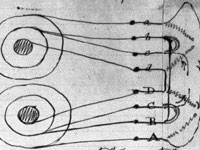Locust Grove: The Samuel Morse Historic Site [NY]
The 180-acre Locust Grove is the estate of Samuel F.B. Morse (1791-1872), patent holder on the electromagnetic telegraph and creator of an early version of Morse code. The site contains an Italianate villa, housing a collection of European and American art and decorative arts. The grounds hold gardens. Exhibits include telegraph technology and paintings by Morse himself. Morse lived on the estate between 1847 and his death in 1872.
The site offers an introductory film, exhibits, period rooms, five curriculum-based educational programs, a summer day camp, guided tours of the villa, 100-minute group gardens and grounds tours, 2-hour group villa and gardens tours, and trails. Reservations are required for all group tours.
